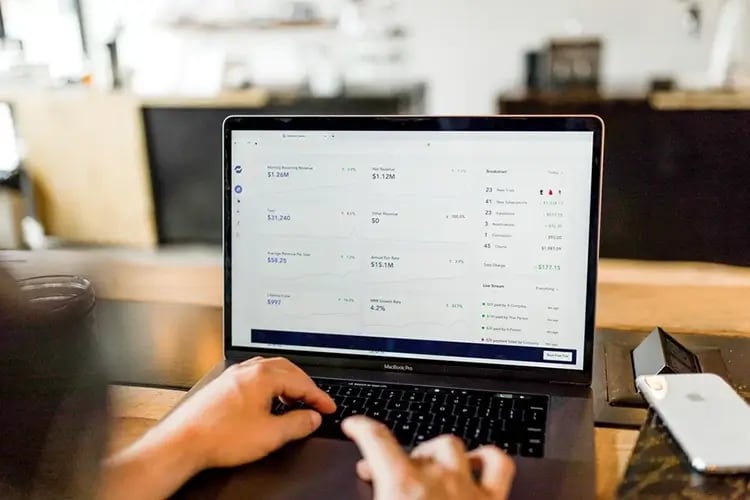
Margin Pressure
Table of contents:
What is margin pressure?
Margin pressure refers to the reduction in profit margin caused by internal or external issues like rising costs, falling prices or other factors. When a retailer is dealing with margin pressure, it means that something is driving revenue down or costs up, a prelude to a decrease in per unit profitability.
What are the risks of margin pressure?
It’s understandable that businesses would want to mitigate the risks of margin pressure or avoid them altogether. Let’s divide these risks into two categories:
- External – When an external factor creates margin pressure, the business has limited or no control over it. A macroeconomic event like inflation, for example, happens to the entire economy and cannot be avoided. New legislation or regulatory changes in the country of operation are not under the company’s control, either. These risks can be prepared for and mitigated as much as possible, but are risks that are often just part of doing business.
- Internal – The risk of internal margin pressure can be better controlled and mitigated by a retailer, but of course the risk is always present. Examples of these risks for e-commerce include having insufficient staff to fill orders, issues with production lines or manufacturing equipment, supply issues and more.
Any of these risks can lead to margin pressure, which in turn puts a retailer at risk of becoming unprofitable.
How relevant is margin pressure in e-commerce?
Margin pressure can be particularly challenging in the e-commerce space for a number of reasons; firstly, because online shopping has created an environment specifically built for easy price comparison. This enables customers to easily compare side by side and make informed decisions, increasing pressure to retailers who choose to compete on price.
Second, the environment is extremely competitive, with countless options available to each consumer. An e-commerce company’s competitors may offer easier shipping, have a broader product assortment or other attractive offers. And because e-commerce has lower barriers to entry, new players are continually entering the market, increasing the competition and squeezing margins further.
Any of these factors can increase a company’s costs or drive them to decrease their prices, narrowing margins and making it challenging to turn a profit.
Examples of margin pressure
There are countless forms of margin pressure, with the most common risks varying by industry, location, partners and many other factors. Below are some examples of margin pressure for e-commerce retailers:
Price competition and transparency
- E-commerce companies often face intense price competition, as consumers can easily compare prices across different online platforms. This increases margin pressure if a business chooses to compete on price, as it must find the right competitive pricing level while maintaining profitability.
Shipping and fulfilment costs
- The costs associated with shipping and fulfilment, including packaging, shipping fees and order processing expenses, make up a significant portion of an e-commerce company’s COGS. In fact, the average cost to fulfil an online order is 70% of the average order value. These costs can squeeze profit margins, especially if the company offers free or discounted shipping to remain competitive, or if external costs, like the price of postage, increase.
Marketing and advertising expenses
- Marketing and advertising campaigns make up a significant portion of e-commerce spending, with various sources estimating average marketing spend to be between 15-30% of revenue. Deloitte found that B2C companies selling products spend around 16% of revenue on marketing. These activities start to put pressure on margins if costs increase, effectiveness of campaigns or ROI decrease, or if generally the revenue generated is not enough to justify the cost of customer acquisition.
Returns and customer service costs
- Returns, exchanges and customer service inquiries are a normal part of e-commerce, especially with return rates exceeding 30% in the current landscape. If costs associated with processing returns, restocking items and providing quality customer support increase, this can put pressure on margins.
For companies who throw away or destroy returned products, all the costs associated with that product were not recuperated through the sale, and margins take a big hit.
Cost of inventory management
- E-commerce companies need to invest in inventory management systems and processes to ensure efficient stock levels and minimise holding costs. However, managing inventory can be challenging, and excess inventory or stockouts can create margin pressure due to increased carrying costs or missed sales opportunities.
Payment processing fees
- E-commerce retailers typically incur fees associated with payment processing, such as transaction fees, interchange fees and gateway fees. These fees can add up and are a form of external margin pressure, especially for companies with high sales volumes or low-profit margins on individual transactions.
Platform and marketplace fees
- Any retailer that sells products via third-party platforms or marketplaces typically has to pay listing fees, transaction commissions or subscription fees. If the external partner raises these fees, it can erode margins, particularly for smaller or newer e-commerce sellers that rely heavily on these platforms for sales.
Macroeconomic events
- Macroeconomic challenges put a huge amount of margin pressure on e-commerce businesses, who have very little control over what happens. For instance, the COVID-19 pandemic required companies to quickly pivot and keep up with online orders as the economy tanked and work restrictions were put in place.
Strategies to deal with margin pressure as an e-commerce retailer
As mentioned above, there are a variety of risks that can create margin pressure, many of which retailers and other e-commerce players have limited control over. However, there are some strategies that can be used to mitigate risk and deal with existing margin pressures.
First, efficient cost management ensures risk is kept as low as possible. Retailers can implement rigorous cost management practices to identify areas for cost reduction or optimisation; for example, negotiating better terms with suppliers, optimising fulfilment and shipping processes and finding cost-effective marketing channels.
Another strategy is to diversify product offerings or find new revenue streams. Ensuring that the business is not reliant on any one source of sales reduces risk if costs associated increase or sales decrease.Broadening the product range to include higher-margin items or exclusive products that provide a competitive advantage is also effective. Retailers can even look into revenue streams beyond traditional product sales, such as offering premium services, subscriptions or partnerships with complementary businesses.
Finally, regularly reviewing and optimising pricing strategies is key to ensure competitiveness and combat margin pressures. Using a tool like Omnia’s Dynamic pricing enables retailers to efficiently automate even the most complex of pricing strategies at scale, ensuring all pricing rules are followed to handle any margin pressures that may arise.
Talk to one of our pricing
experts today.


